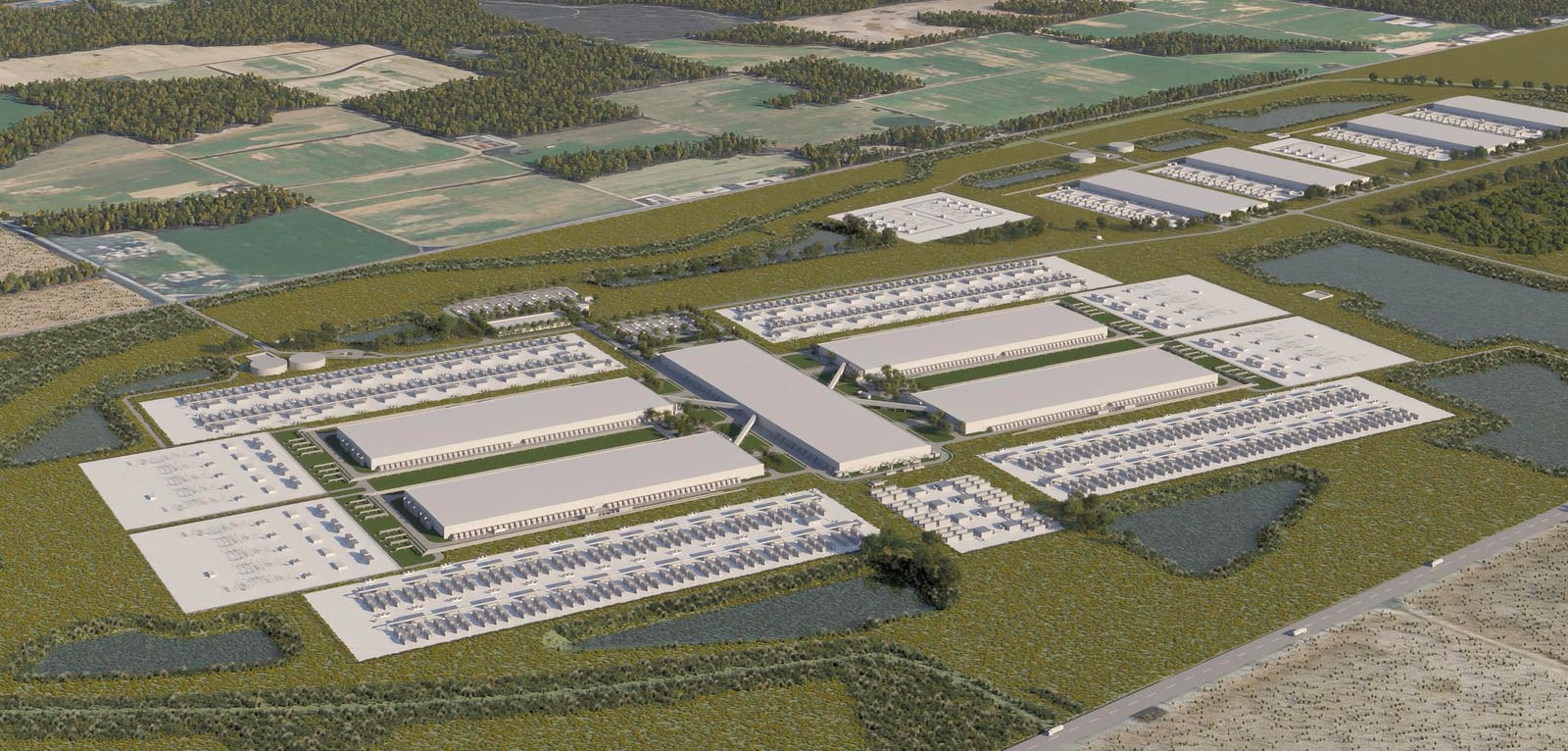Business
The Trillion-Dollar A.I. Data Center Tsunami —Coming To A Field Near You

A New Era for AI: Mark Zuckerberg’s Vision and Meta’s $65 Billion Bet
2024 is shaping up to be a pivotal year for artificial intelligence, and Mark Zuckerberg is placing a massive bet on it. In a recent blog post, the Meta CEO announced plans to invest $65 billion by 2025, with a significant portion dedicated to advancing Meta’s AI capabilities and building on its Llama 4 model. This move signals Meta’s aggressive push into the AI race, aiming to solidify its position as a leader in the tech industry. Zuckerberg’s announcement has generated significant buzz, but the real question is: what does this investment mean for the future of AI, and how will Meta’s ambitious plans unfold?
The Sucré Data Center: A $10 Billion Mega-Project in Louisiana
At the heart of Meta’s AI expansion is a colossal $10 billion data center project in northeast Louisiana. Dubbed “Sucré” (French for “sweet”), this 2,250-acre site will house 4 million square feet of floor space, making it the largest of Meta’s 20 worldwide data centers. To power its operations, Sucré will require a staggering 2.23 gigawatts of electricity—enough to power over 2 million homes. Utility company Entergy has stepped in to meet this demand with twin high-efficiency natural gas turbines, costing $3.2 billion, while Meta has allocated an additional $250 million for infrastructure development, including roads and water systems. The project is expected to create up to 5,000 construction jobs at its peak, making it a significant economic boon for the region.
Energy Demands and Environmental Implications: Is This Sustainable?
The sheer scale of Sucré raises important questions about its environmental impact. The data center’s reliance on natural gas for power has sparked concerns, particularly given Meta’s commitment to achieving carbon neutrality in its operations. While the company has announced plans to purchase renewable energy certificates from solar farms and invest in wind and solar projects, critics argue that the project’s carbon footprint could still be substantial. Furthermore, the long-term feasibility of relying on natural gas is under scrutiny, especially as the tech industry grapples with the challenges of sustainability.
Expert Insights: Zach Krause on the Future of Data Centers and Energy Demand
Zach Krause, an analyst at East Daley Analytics, offers a nuanced perspective on Meta’s plans and the broader implications for the tech industry. Krause, who tracks data center announcements and energy demand, acknowledges the scale of Meta’s ambitions but urges caution. He notes that while advancements in AI energy efficiency are promising, the sheer demand for computing power will likely offset any reductions in energy consumption—a phenomenon known as the Jevons Paradox. This paradox suggests that improvements in efficiency often lead to increased consumption, as technologies become more accessible and widely adopted. Krause predicts that America’s data centers will require an additional 81 gigawatts of electricity by 2030, equivalent to the power needed to run the entire state of Texas.
The Bigger Picture: AI’s Insatiable Appetite for Power
Meta’s Sucré data center is just one piece of a much larger puzzle. The AI industry’s hunger for power is growing at an unprecedented rate, with companies like Microsoft, OpenAI, and Amazon also investing heavily in data centers and AI infrastructure. Microsoft CEO Satya Nadella has weighed in on the issue, tweeting about the Jevons Paradox and noting that as AI becomes more efficient and accessible, its adoption will skyrocket, turning it into a commodity that society cannot get enough of. Meanwhile, OpenAI’s Stargate project, a $500 billion multi-site data center expansion, is poised to require over 5 gigawatts of electricity, further straining the energy grid.
Looking Ahead: The Promise of Renewable Energy and Advanced Technologies
Despite the challenges, Meta is exploring ways to mitigate the environmental impact of its data centers. The company has announced partnerships with renewable energy providers and is investing in solar and wind projects to offset its carbon emissions. Additionally, Meta is exploring the potential of advanced nuclear technology, with Zuckerberg even considering the possibility of building a data center adjacent to a nuclear power plant. While the discovery of an endangered bee species near the proposed Diablo Canyon site in California has stalled those plans for now, the company remains committed to achieving carbon neutrality by 2030.
As the AI revolution gains momentum, the interplay between technological advancement, energy demand, and environmental sustainability will be a defining issue for companies like Meta. While the road ahead is fraught with challenges, the promise of AI to transform industries and improve lives is undeniable. The question now is whether the tech industry can find a way to balance its insatiable appetite for power with the need to protect the planet. Only time will tell if Meta’s vision of a sweet, AI-driven future is within reach—or if it will leave a bitter taste in its wake.











